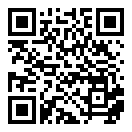Pages:
45-60
Receive Date: 2025/12/02
Accept Date: 2025/12/02
Abstract:
The present research was conducted to make a measurement for testing jealousy. The first step was to collect the Islamic doctrines as to the symptoms of jealousy from the Holy Qur’an and traditions (hadiths) in a descriptive manner and the next step was to classify, combine and analyze them and the last step was to make a forty-item test based on the symptoms and the methods used in psychometrics and statistics. The results obtained from the survey in which average 20 persons versed in psychology and Islamic subjects had offered their opinions showed the reliable score of 87.6. The test validity and reliability was established when 353 people as the real examinees took part in the test making use of statistical methods and formulas, especially the computer program SPSS used for statistical analysis. Cronbach’s alfa, spilit-half correlation, correlation of the three cognitive, emotive and behavioral constituents, or the total score in terms of Pearson correlation(r) is above 0.7, which indicates that the test validity is high. The results of the test (T) showed that there is as significant a difference between men and women in the scores for jealousy as there is between the married and unmarried people. The jealousy test is now available to be used and carried out in further researches.
چکیده و کلیدواژه فارسی (Persian)
Title :آزمون اولیه سنجش حسادت با تکیه بر منابع اسلامی
Abstract:
پژوهش حاضر با هدف ساخت آزمون سنجش حسادت صورت گرفت؛ به همین منظور ابتدا آموزه های اسلامی دربارهی نشانگان حسد از قرآن و احادیث به صورت توصیفی گردآوری و سپس دسته بندی، تلفیق، تجزیه و تحلیل شد. در مرحلهی بعد به استناد این نشانه ها و به کمک روش های روان سنجی و مباحث آماری، آزمونی چهل ماده ای طراحی و تدوین شد. میانگین نظرات بیست نفر از کارشناسان و متخصصان مسائل اسلامی و روان شناسی، نمرهی روایی 87.6 درصد را نشان می دهد؛ بنابراین، آزمون از روایی محتوایی بالایی برخوردار است. اعتبار آزمون با اجرا بر روی 353 نفر آزمودنی واقعی و با استفاده از فرمول ها و روش های آماری و نیز برنامه تخصصی spss، محاسبه و تأیید شد. میزان آلفا، هم بستگی بین دو نیمه و هم بستگی سه مؤلفهی شناختی، عاطفی و رفتاری، با نمرهی کل آزمون بر اساس هم بستگی پیرسون(r) بالاتر از 0.7 و نشانگر اعتبار بالای آزمون است. نتایج آزمون T دربارهی میزان نمره حسادت زنان و مردان، و نیز افراد مجرد و متأهل تفاوت معناداری را نشان داد. هم اکنون آزمون سنجش حسادت، برای کاربرد و اجرا در پژوهش های بعدی، آمادهی استفاده است.
References:
- آذربايجاني، مسعود، تهيه و ساخت آزمون جهت گيري مذهبي با تكيه بر اسلام، قم، پژوهشكده حوزه و دانشگاه، 1382.
- حسنزاده، رمضان، روشهاي تحقيق در علوم رفتاري، تهران، ساوالان، 1382.
- خداپناهي، محمدكريم، انگيزش و هيجان، تهران، سمت، 1386.
- كليني، محمدبن يعقوب، الكافي، تصحيح و تعليقه علي اكبر غفاري، چ 2، تهران: مكتبة الصدوق، 1381 ق.
- گنجي، حمزه، روان شناسي تفاوتهاي فردي، تهران، بعثت، 1373.
- نراقي، محمد مهدي، جامع السعادات، ج 2، چ 3، نجف: مطبعة النجف، 1383 ق.
- Piper, M., 1994, Reviving opselia, New York, Ballantime, p.87
Cite this article:
RIS
Mendeley
BibTeX
APA
MLA
HARVARD
VANCOUVER
APA | MLA | HARVARD | VANCOUVER
Walizadeh, Abolghasem, Azarbayjani, Masuod.(2025) The Primary Jealousy Test Based on Islamic Resources. Ravanshenasi Wa Din, 3(2), 45-60
APA | MLA | HARVARD | VANCOUVER
Abolghasem Walizadeh; Masuod Azarbayjani."The Primary Jealousy Test Based on Islamic Resources". Ravanshenasi Wa Din, 3, 2, 2025, 45-60
APA | MLA | HARVARD | VANCOUVER
Walizadeh, A, Azarbayjani, M.(2025) 'The Primary Jealousy Test Based on Islamic Resources', Ravanshenasi Wa Din, 3(2), pp. 45-60
APA | MLA | HARVARD | VANCOUVER
Walizadeh, A, Azarbayjani, M. The Primary Jealousy Test Based on Islamic Resources. Ravanshenasi Wa Din, 2025; 3(2): 45-60




